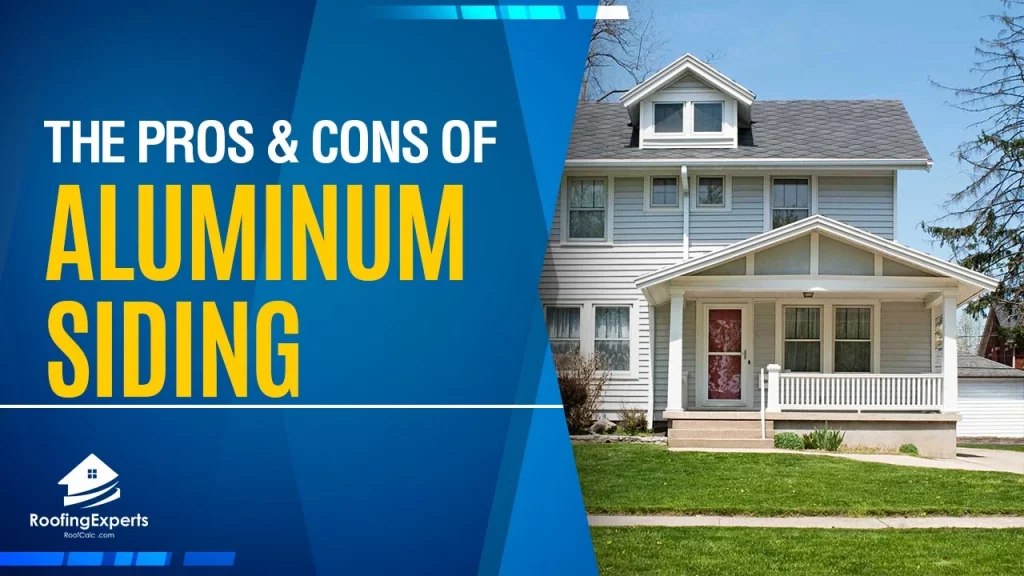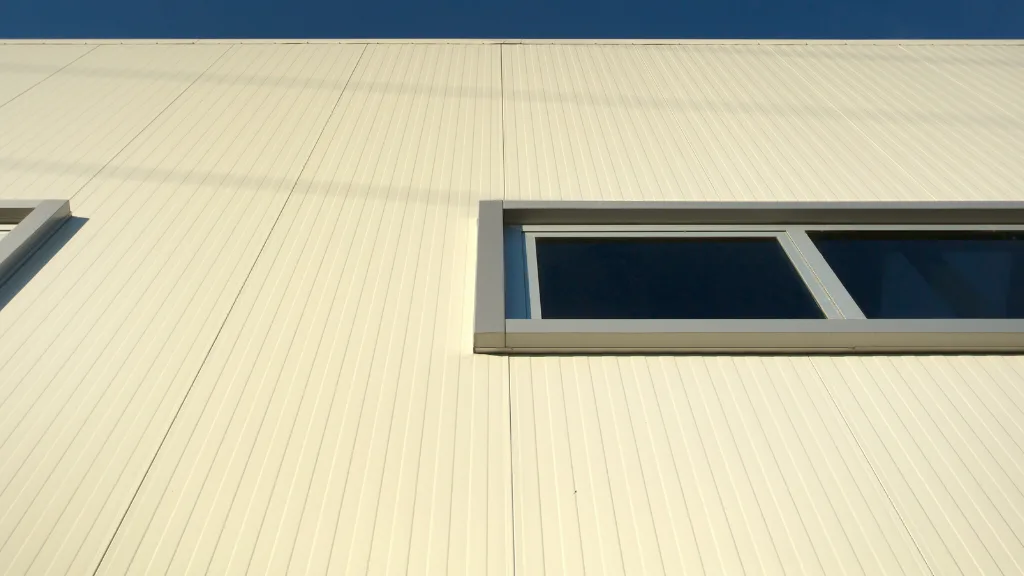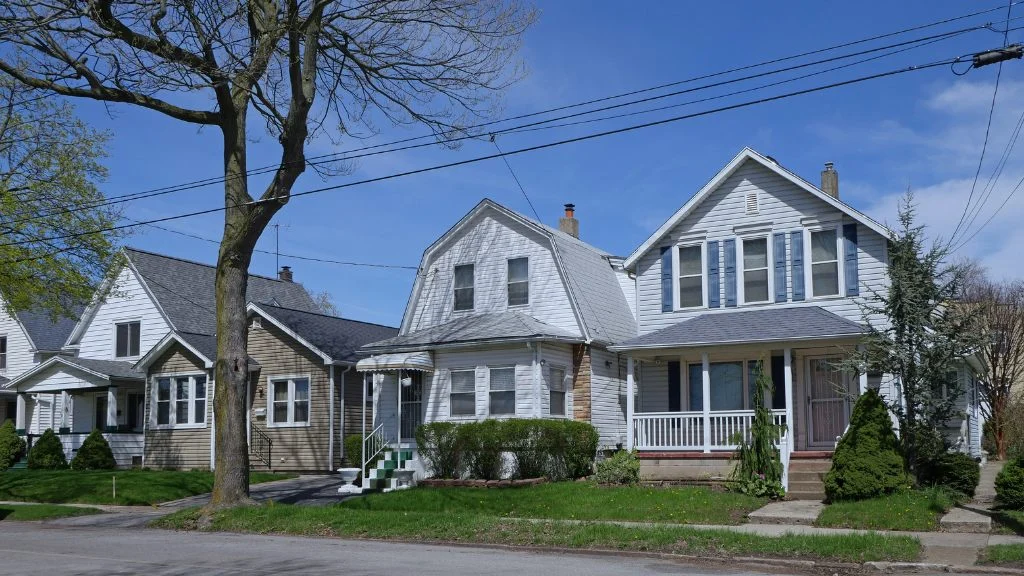
Aluminum Siding is a surface on the exterior of your home which helps to protect it from wear and tear. It’s made with aluminum, hence the name Aluminum siding.
The perforated pattern also allows water drainage and air circulation around your walls for better insulation against extreme temperatures. When deciding whether or not you want to install this siding, you need to contemplate the pros and cons.
What Are the Pros and Cons of Aluminum Siding?
These are some of the pros and cons of Aluminum sidings. It’s important to consider these factors when deciding whether or not this material is right for you.
The Pros:
Durable and long-lasting. Less replacement cost as compared to other types of siding as it is stronger, and lighter in weight.
It doesn’t warp or rot from exposure to water. And vandalism is less likely on this type of exterior wall finish since the material used for Aluminum Siding can be difficult to break into.
Attractive appearance, especially for houses built in the modern style with large window panes and minimal exterior decoration.
Aluminum Siding is available in a wide variety of colors so you can choose whatever best complements your home’s design scheme or makes it stand out from others on the street. It also doesn’t need regular re-painting as wooden siding does.
Energy-efficient. Aluminum siding is very effective in reducing heat loss and it’s also resistant to extreme temperatures, which can cause other types of exterior wall finish to crack or peel off.
Easy installation process for this type of siding as compared to others like brick or stucco exteriors. It doesn’t require a lot of time to install and is less labor-intensive.
Low maintenance cost as it doesn’t require regular cleaning or repainting, unlike wooden exterior siding which needs to be stained every few years.
It also does not rot from exposure to moisture so you don’t have to replace the whole wall just because of a small section that’s been damaged.
Resistant to fire. Aluminum is one of the most heat-resistant materials available, so it’s less likely that this type of exterior wall finish will melt or burn in case there is a small fire on your property.
It also doesn’t produce toxic fumes like some other types of siding do when exposed to high temperatures for extended periods of time.
Good for homes located in earthquake zones as it’s not likely that the sidings will fall off or get damaged when there is an earthquake, unlike wooden exterior siding which can be easily shaken by tremors and leave your home exposed to potential damage.
It also minimizes noise pollution coming from outside your property since Aluminum Siding isn’t as likely to rattle and make noise when exposed to loud sounds like thunder or heavy traffic.
Resistant to pests like termites, carpenter ants, woodpeckers, rodents, etc. This is because of the aluminum material which has a very low moisture content so it’s not attractive for these types of insects who feed on damp wood.
Aesthetic finish that complements brick, stucco, or stone exteriors as well since it’s available in a wide variety of colors.
The Cons:
- It is expensive to install and maintain as compared to other types of exterior wall finishes such as fiber cement, vinyl siding , stucco or wood.
- For example, you’ll need professional assistance if applying high performance coatings for Aluminum Siding.
- These are very thin and hard to apply by yourself.
- It’s also important to make sure the paint job is smooth before applying a sealant.
- Aluminum Siding isn’t as good at preventing air infiltration compared with other exterior wall finishes such as cedar or fiber cement because of its light weight and lack of insulation properties.
- In fact, this type of siding is more likely to retain heat as compared with other wall finishes.
- This can be a problem during summer and winter months, especially if you live in an area where temperature extremes are very frequent.
- Aluminum Siding isn’t resistant to rust. If left untreated for too long, it will eventually corrode from exposure to rainwater or condensation.
- The material can be galvanized or painted with a rust-resistant paint to prevent this from happening but you will need to re-paint it more frequently if your climate is humid and wet most of the time.
What are the Different Types and Styles of Aluminum Sidings?
There are hundreds of styles, colors, and patterns available for Aluminum Siding and they can be categorized into different types.
Solid: This is the most basic type that’s made entirely from aluminum with no gaps or holes in between panels.
It has a very clean look but it may not suit homes located in windy areas since strong winds can push the siding panels and make them rattle.
Raised: this type of Aluminum Siding has a three-dimensional finish that makes it look like real wood or brick.
It is very popular with homeowners who want to improve their home’s aesthetics without spending too much money on expensive renovations.
Embossed: this type of Aluminum Siding goes through a special embossing process to give it an artistic finish.
It can be customized with designs and patterns that enhance your home’s exterior appearance while minimizing air infiltration problems.
Decorative: this is the most expensive option for Aluminum Sidings. They are made from wood or plastic materials but have an aluminum finish to give it a modern look.
It’s suitable for homeowners who want an elegant and luxurious exterior appearance but still have the durability of Aluminum Siding.
Overlapped: this type is similar to solid siding panels but are joined together with insulation in between them. This helps prevent condensation from accumulating inside your home when it’s exposed to humidity or rainwater.
Vented: this type is similar to the overlapped siding panels but allows air ventilation inside your home when it gets too hot during the summer months.
It has an open weave design that prevents water from accumulating on the surface while allowing moisture and heat out of your home. This, in turn, increases your home’s energy efficiency.
Custom: this type of Aluminum Siding is the most flexible and customizable as it can be customized to match any style or design that you want.
It has a rough surface appearance but still provides good insulation for homes located in cold climates with very low humidity levels.
As we have seen, there are a number of different types and styles available for Aluminum Siding, and choosing the right one can significantly improve your home’s exterior appearance without compromising its durability.

What Are the Helpful Tips for Homeowners Who Before Installing Aluminum Sidings?
Before you install Aluminum Siding at your home, there are several things that you need to consider.
Durability: make sure the siding is made from high-quality materials with a proven track record of durability.
It’s also important to choose the right type for your climate and find out if it has any special finishing treatments or coatings that can prevent corrosion and rust formation.
Energy Efficiency: choose a type of Aluminum Siding that will help improve your home’s energy efficiency by allowing ventilation inside the walls to remove excess heat during hot summer months or trap it in winter months when you want warmth.
It should also have good insulation properties to minimize air infiltration problems that can affect your home’s indoor temperature levels.
Appearance: you also need to choose the right style and color for your Aluminum Siding and make sure it matches your home’s exterior design.
Make sure that any patterns or designs are applied properly so they won’t fade over time, especially if you live in an area where there is a lot of direct sunlight.
Cost: the final thing you need to consider is the cost as it can vary significantly depending on your home’s size and location, along with other special features that might be required for installation such as ventilation channels or insulation panels.
You should always make sure this type of siding doesn’t compromise your budget but still provides good value for money.
With these helpful tips, you can make an informed decision about your Aluminum Siding and choose the right type for your home.
The Bottom Line
The bottom line is that aluminum siding has advantages and disadvantages. You need to weigh the pros and cons of each type before making a decision on what you want for your home or business.
For instance, if there are any gaps between boards, then it will be easier to see through them with vinyl than aluminum.
However, many people prefer the look of aluminum because they like how reflective it can be when looking at it from different angles in comparison to vinyl which doesn’t have as much depth.
One way to do this is to consult with professional installers who are knowledgeable about this type of siding. They should be able to guide you through the entire process and help you choose a type that matches your home’s exterior design.
In addition, some companies offer warranties with their products whereas others don’t provide this kind of coverage yet still charge more money upfront for their product.
This means that you’ll likely end up spending more money overall even though a warranty might cost less.


